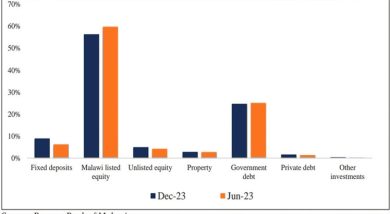Income rise fails to narrow poverty gap—economist
Although Malawi’s gross national income (GNI) per capita has increased in the past decade, the rise has failed to narrow the income inequality and poverty rates, economic statistician Alick Nyasulu has said.
African Development Bank (AfDB) figures published recently show that between 2010 and 2019, the country’s GNI per capita—the total amount of money earned by a country’s people and businesses—increased from $250 (about K188 000) to $1 089 (about K816 750) between 2010 and 2019.

In an interview on Tuesday, Nyasulu said although the value of all income produced by the country’s residents within the geographical borders and its net receipts of income from abroad had increased; the levels of income inequality and poverty remain high.
He said: “We are still an agro-economy run by subsistence farmers that depend on subsidies, a sign of how worse our incomes are.
“We need to sort out a lot of basic pre-conditions for economic take off to realise our graduation into a middle income country. At this rate, we are far from it.”
AfDB figures show that the share of income held by the poorest 10 percent of the population in the country has moved by a meagre 0.2 percent to 1.6 percent between 2010 and 2016 while the income of the richest 10 percent of the population has moved by 0.6 percentage points to 38.1 percent during the same period.
Figures from the United Nations Capital Development Fund indicate that there is substantial inequality in Malawi, with a Gini-coefficient—a measure of the distribution of income across a population—measuring 0.45 in 2016 (more or less unchanged since 2010).





